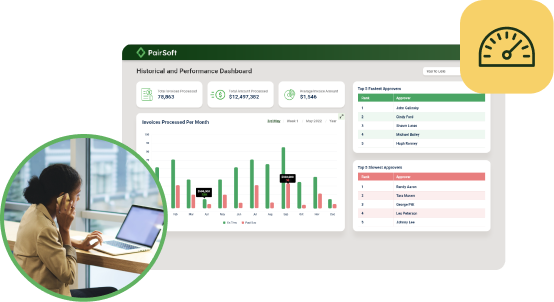
Janet Martin
Janet joined the PairSoft team upon its merger with Paramount Workplace, where she was also an integral part of the sales team for years. Janet resides in Michigan with her family.
View all posts by Janet MartinJanet Martin

Many procurement applications promote ERP integration, but just what does it mean? Integration can mean different things to different procurement software vendors.
Here we highlight the benefits of integration and detail what matters and what to look for when evaluating an procurement integration to your ERP for your organization.
Integrating procurement solutions with ERP simply makes smart business sense. Integration promotes many of the attributes businesses are looking for in their procurement and finance systems, including flexibility, control, visibility and forecasting.
These attributes are also represented in a set of 2019 ERP trends that include a focus on functionality over price, favoring solutions that provide real-time business insights and an increasing move to a two-tier model, that combines more than one software or vendor.
How do you define ERP integration?
Gartner refers to “postmodern ERP”—a technology strategy that automates and links administrative and operational business capabilities with appropriate levels of integration that balance the benefits of vendor-delivered integration against business flexibility and agility.
The “appropriate levels of integration” Gartner refers to can mean very different things to different eprocurement software vendors. We’ve seen vendors promoting their application’s integration with ERP when that “integration” took the form of imports into and out of the two solutions.
Others use the term integration when there may be only one or two touchpoints, greatly limiting the overall functionality. To truly add value, the integration between applications needs to be deep and far-reaching.
Here are a few questions you should ask a procurement solution vendor as you shop for an integrated procurement solution.
A simple question with a simple answer.
Does the vendor have a development partnership with the ERP? A development partnership ensures that the integration is developed according to specifications required by the ERP and is e-certified, when there is a required certification for the integration.
This is an important one. Without real-time integration, efficiencies are slowed, and worse—requisition and order activity could lead to an undetected over spend and over-budget situation.
You’ll see a lot of variation here. Some vendors may list their solution as integrated to an ERP when they offer minimal integration touchpoints—perhaps just to the general ledger or account payable invoices.
This means key areas of automation and efficiencies are lacking, leaving it to the user to find another way to transfer or capture the data.
Vendors are usually good at promoting what they do, but not as good at telling you what they don’t do. Walk through the entire workflow and determine what the system cannot help you automate.
This way you can make an educated decision on which vendor to select and how much you will need to automate other areas of your workflow or who will manually handle these areas.
Any solution you select needs to be configurable to match your organization’s workflows. Make certain your goals won’t be limited by limited configuration functionality that the vendor offers.
Consider whether the solution offers out-of-the-box integration, where all that is required of you is the configuration of your workflows, users and roles.
Some solutions that promise integration require code customizations in order to deliver the promoted functionality.
Ask if the data exchange is an automated, behind-the-scenes function that requires no user interaction. Some solutions require manual synchronization where someone must run a script to start the synchronization.
Procurement applications, even those promoted by your ERP publisher, vary widely in their functionality and the depth and breadth of the integration. One missing piece of functionality could cost you time, efficiencies and money.
So, ask the right questions, view a demonstration and talk to other users before you make any decision.



Many organizations start with manual receipt handling, fragmented card feeds and slow AP processes. Implement AI agents to auto-capture receipts, route approvals, enable punch-out buys and post to the ERP.
Result: faster batching, fewer errors and cost savings. “This saves us hours every month.”
Many organizations face slow, paper-heavy AP and fragmented procurement that waste time and inflate costs. AI Agents can automate approvals, PO matching and record sync to improve speed, accuracy and control. Client quote: “It freed up hours and made our process reliable.”
Operational drag and rising costs slow growth: teams waste time on manual tasks, misaligned priorities and opaque processes. AI Agents help automate routine work and coordinate actions across teams. “We’ve lost time to repeats and handoffs,” says a typical client.
Companies struggle with manual procurement, fragmented approvals, and costly integrations that slow growth and obscure spend. Our AI Agents streamline requisitions, POs, and invoice matching to cut manual work and improve visibility. “We were wasting time and missing insights,” says a client.

Many teams start with fragmented PO/AP systems, manual matching and delayed financial reporting. Deploying AI agents to automate PO checks, real-time encumbrance tracking and invoice matching reduces processing time and errors, delivering live budgets and faster closes. “Finally, we can see current balances and approve instantly.”
Many companies juggle growing invoice volumes and legacy systems. They struggle with manual processes, compliance gaps and limited headcount. Our AI Agents automate integrations, enforce rules and surface exceptions. The typical outcome: faster closes and measurable ROI. “We stopped chasing invoices.”